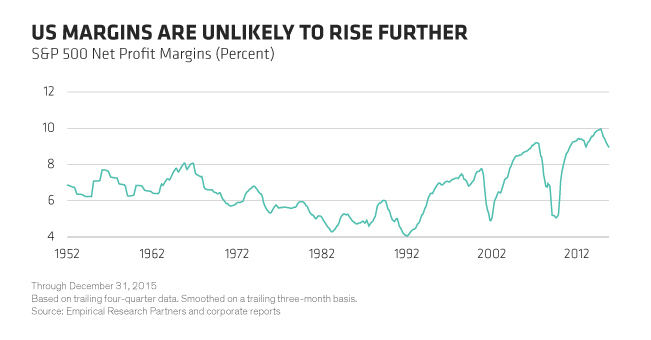A Recipe for Lower Volatility in High Yield
by Gershon Distenfeld, Director, High Yield, AllianceBernstein
“He who doesn’t risk never gets to drink champagne.” As investors, we can all relate to this Russian proverb. But in choppy markets, big risks can be hard to stomach. A low-volatility strategy can help.
We all know we have to take some risk to get returns. High-yield investors who rely on their portfolios to generate income know it better than most. But during periods of volatility, high-income assets often get whipsawed by changes in market sentiment and outlook. That can expose investors to more downside risk than they’re comfortable with.
Abandoning high yield altogether, though, is risky. Sizable corrections aren’t unusual, but high-yield bonds tend to rebound quickly.
So how can investors stay the course and generate the income they need without taking undue risk? We think they should consider a two-pronged strategy: shorten duration and focus on quality.
Over time, our research shows that high-quality, short-duration bonds have dampened portfolio volatility and held up better in down markets (Display 1).

When we zero in on 2015—a particularly turbulent year for high yield and other return-seeking assets—we see a similar pattern (Display 2).

In our view, a strategy that combines bonds with these characteristics and tactical hedging strategies, such as the use of credit default swaps, can make it easier for investors to stay in the high-yield market without losing too much sleep.
Shorter Duration, Smoother Ride
Why does this combination work so well? First, let’s consider duration, which is a measure of a bond’s sensitivity to changes in its yield. In general, bonds are highly sensitive to yield changes—when yields rise, prices fall. The shorter the duration, the less damage a rise in yields will do.
For most investment-grade bonds, yield changes are driven primarily by changes to interest rates, or the yields on government bonds. High-yield bonds, though, are less sensitive to interest-rate changes than other types of bonds.
What’s more, credit spreads—the extra yield that high-yield bonds offer over comparable government bonds—often decline as rates rise, providing a cushion against rate increases. And at current levels (the option-adjusted spread for the Barclays Global High Yield Index is above 600 basis points), there’s plenty of cushion.
Shorter-duration securities also hold up better when the broader high-yield market sells off for other reasons. The prospect of higher US interest rates was only one reason the market struggled last year. Worries that weak global growth and falling commodity prices would push more issuers toward default also hurt. But shorter-duration bonds lost less than their longer-duration cousins.
Don’t Forget Quality Control
That brings us to quality. The primary risk for short-duration high-yield bonds is credit risk. And now is a particularly bad time to be stretching for yield without regard for credit quality.
Remember, we’re in the later stages of the credit cycle in many parts of the high-yield market. While valuations in US and European high yield have become more attractive in recent months, many low-quality, CCC-rated “junk” bonds still don’t offer enough reward to justify their relatively high risk of default.
The balance between returns and downside protection will vary depending on each investor’s needs and comfort level. But using an approach that combines higher credit quality and shorter-maturity bonds—and applies hedging strategies to further limit volatility—should help investors who need a steady stream of income to remain invested in high yield.
The views expressed herein do not constitute research, investment advice or trade recommendations and do not necessarily represent the views of all AB portfolio-management teams.
Copyright © AllianceBernstein
















